Securing the Perimeter: Foundation Anchor Bolts and Sill Plate Protocols
by Nick Gromicko and Ben Gromicko
Join the discussion about this article.
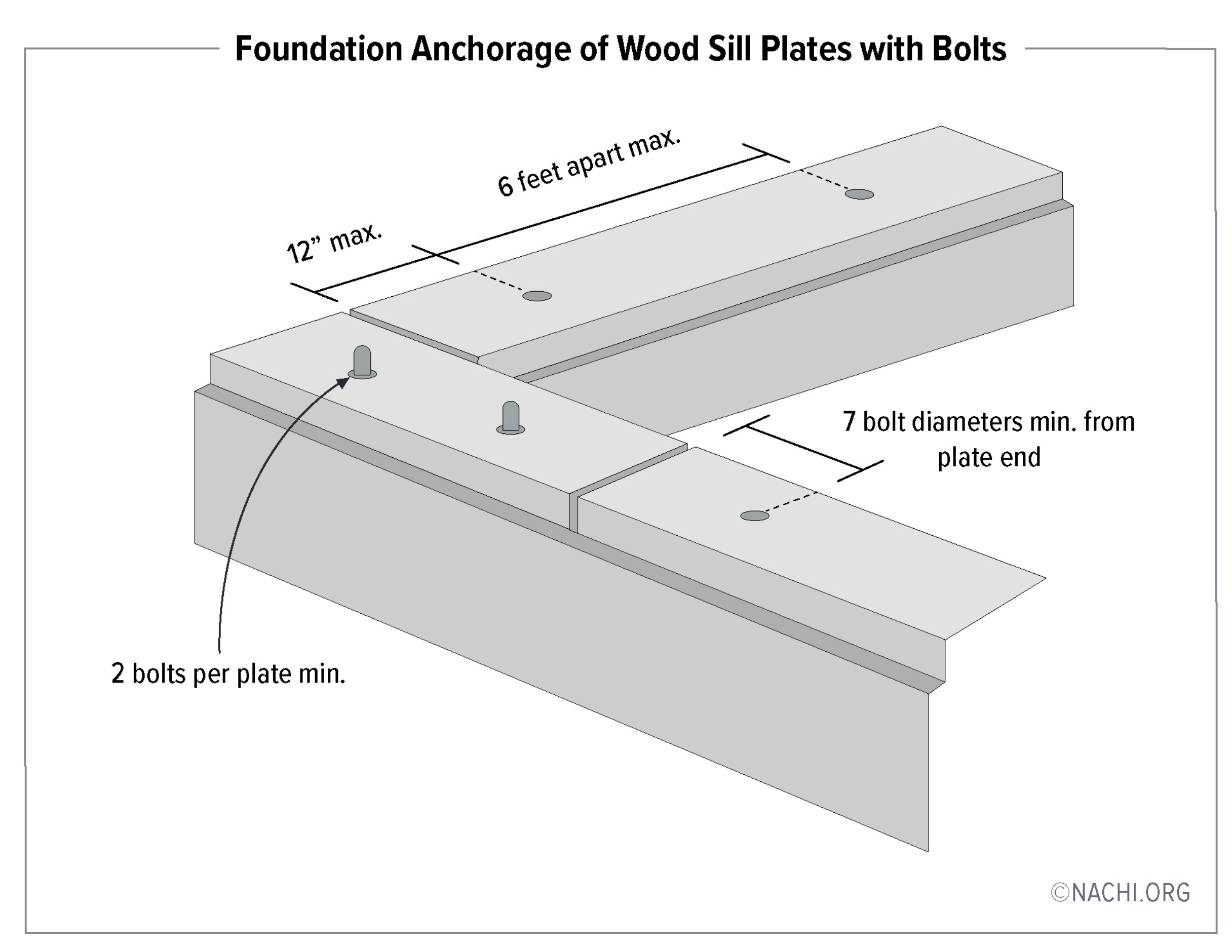
The connection between a building's frame and its foundation is critical to structural integrity. This junction, created through proper foundation anchorage, enables a building to resist lateral forces from earthquakes, high winds, and other environmental forces. This article translates the requirements in International Residential Code IRC® Section R403.1.6 into practical inspection guidance for home inspectors, code inspectors, and contractors. First, let's learn a bit about lateral forces that can be applied to a house or building.
Four Types of Seismic Lateral Forces on a House

While hurricanes and tornadoes primarily create uplift forces, earthquakes generate predominantly lateral (horizontal) forces that affect buildings in unique ways. Understanding these differences is crucial for proper inspection of foundation anchorage systems.
During an earthquake, the ground beneath a home accelerates horizontally in multiple directions.
While hurricanes and tornadoes primarily create uplift forces, earthquakes generate predominantly lateral (horizontal) forces that affect buildings. Sliding: The entire house can shift off its foundation when earthquake forces push it sideways, especially if it's not properly anchored. Overturning: Walls or structures may tip or turn over due to strong horizontal shaking. Racking: The house's frame can distort into a parallelogram shape—this often happens when bracing is inadequate. Soft-story failure: A lower level with large openings (like garages) lacks enough lateral support, making it prone to collapse while upper stories stay intact.
Two Types of Seismic Plane Forces on a Wall

Seismic forces affect walls in two primary ways, both requiring specific anchoring solutions:
In-Plane Forces (Parallel to Wall)
What happens: Forces push and pull parallel to the wall length
Potential failures:
- Anchor bolts can shear, allowing the building to slide off its foundation
- Partial anchor bolt failure can create uplift on one side, causing walls to overturn
Resistance elements:
- Anchor bolts connecting sill plates to foundation
- "Shear nailing" (nails attaching wall sheathing to top plate, studs, and sill)
What to inspect: Proper anchor bolt placement, size, and spacing; appropriate sheathing attachment
Out-of-Plane Forces (Perpendicular to Wall)
What happens: Forces push walls backward and forward like a swinging door
Potential failures:
- Walls tilt and flex
- Perpendicular walls rack out of plumb
- Floor and roof diaphragms may rotate (torsion)
- "Soft story" collapse (when a lower story with large openings supports significant weight above)
Resistance elements:
- Connections between wall top plates and floor/roof framing
- Anchor bolts in sill plates
- Proper bracing around large openings
What to inspect: Connection integrity between walls and horizontal diaphragms; adequate reinforcement around garage doors and other large openings
Remember: In seismic events, a building is only as strong as its weakest connection. Your careful inspection of these critical anchoring points could be the difference between a home that survives an earthquake intact and one that suffers catastrophic failure.
Why Foundation Anchorage Matters
Foundation anchorage serves as the crucial transfer mechanism between a building's frame and its foundation. Various lateral forces—including wind pressure, earthquake movement, soil pressure, and foundation settlement—must be effectively transferred through the structure to maintain stability.
When installed according to code requirements, anchor bolts provide the necessary capacity to resist these forces and maintain the building's stability during stress events. Think of this anchoring system as creating a unified structure from what would otherwise be separate components.
Lateral Forces on a House
Unlike gravity, which pulls consistently downward, lateral forces push horizontally against a structure from various directions. These sideways forces come from multiple sources: wind pressure pushing against exterior walls; seismic activity causing the ground to shift horizontally beneath the foundation; soil expansion or hydrostatic pressure against foundation walls; and even vehicle impacts in some situations.
Wind forces increase dramatically with height and can create both pressure (pushing) and suction (pulling) effects on different sides of a house simultaneously. During earthquakes, the ground accelerates horizontally, and due to inertia, the house initially remains in place while the foundation moves beneath it—like pulling a tablecloth from under dishes. This creates shearing forces at the foundation-to-wall connection point. Without proper anchorage, these lateral forces can cause a building to slide off its foundation, rack (deform) from its square shape, or even topple in extreme conditions. Foundation anchor bolts are specifically designed to resist these horizontal movements, transferring lateral forces from the walls down to the foundation and ultimately to the ground, keeping the structure stable during these dynamic events.
Standard Anchor Bolt Requirements for Wood Construction
Basic Materials and Spacing
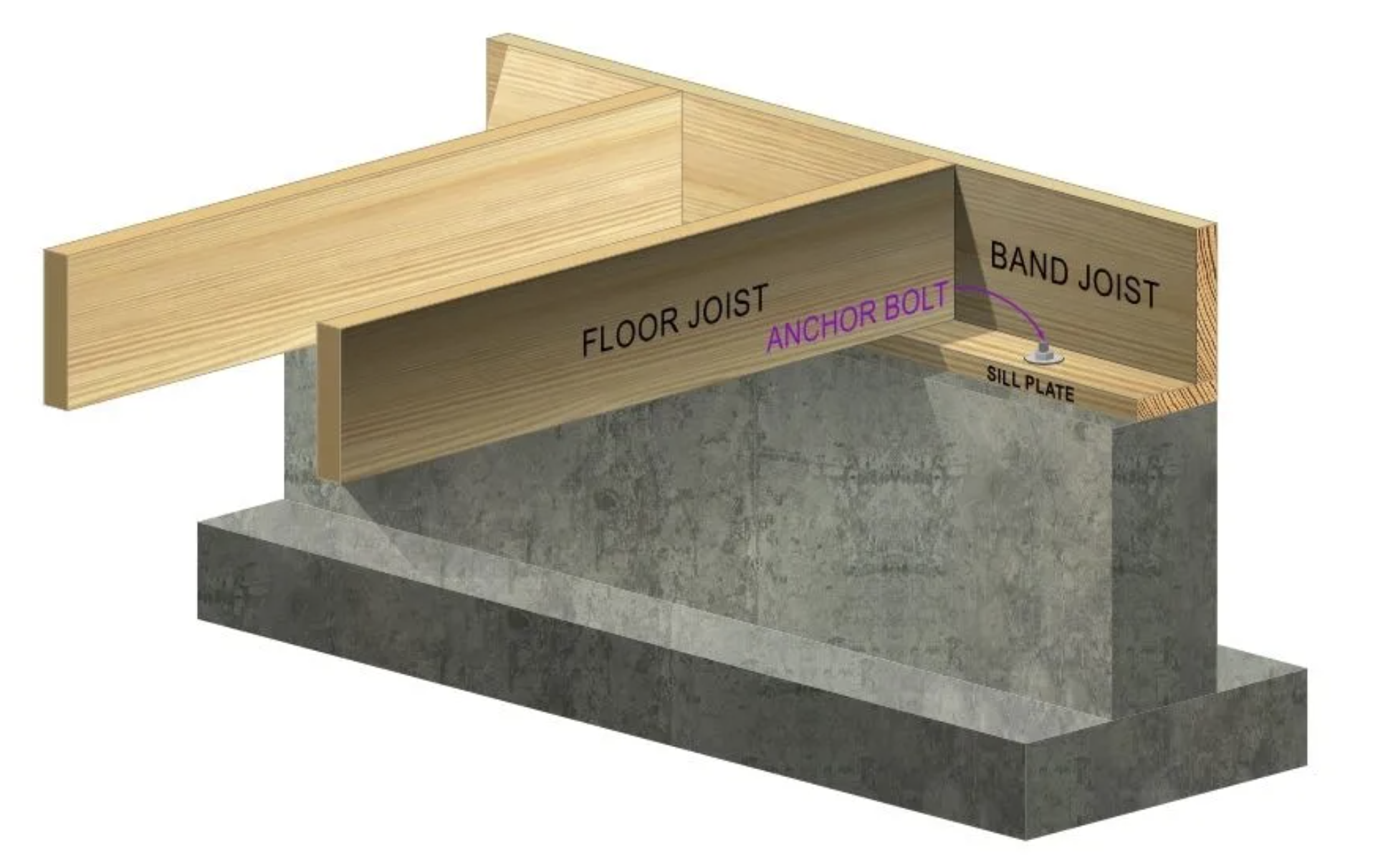
- Required Materials: Wood sill plates and walls on continuous foundations must be anchored to the foundation
- Bolt Size: Minimum ½-inch-diameter (12.7 mm) anchor bolts are required
- Spacing: Bolts must be no more than 6 feet (1829 mm) apart on center
- Alternatives: Approved anchors or anchor straps that provide equivalent strength to ½-inch-diameter anchor bolts are acceptable
Installation Requirements
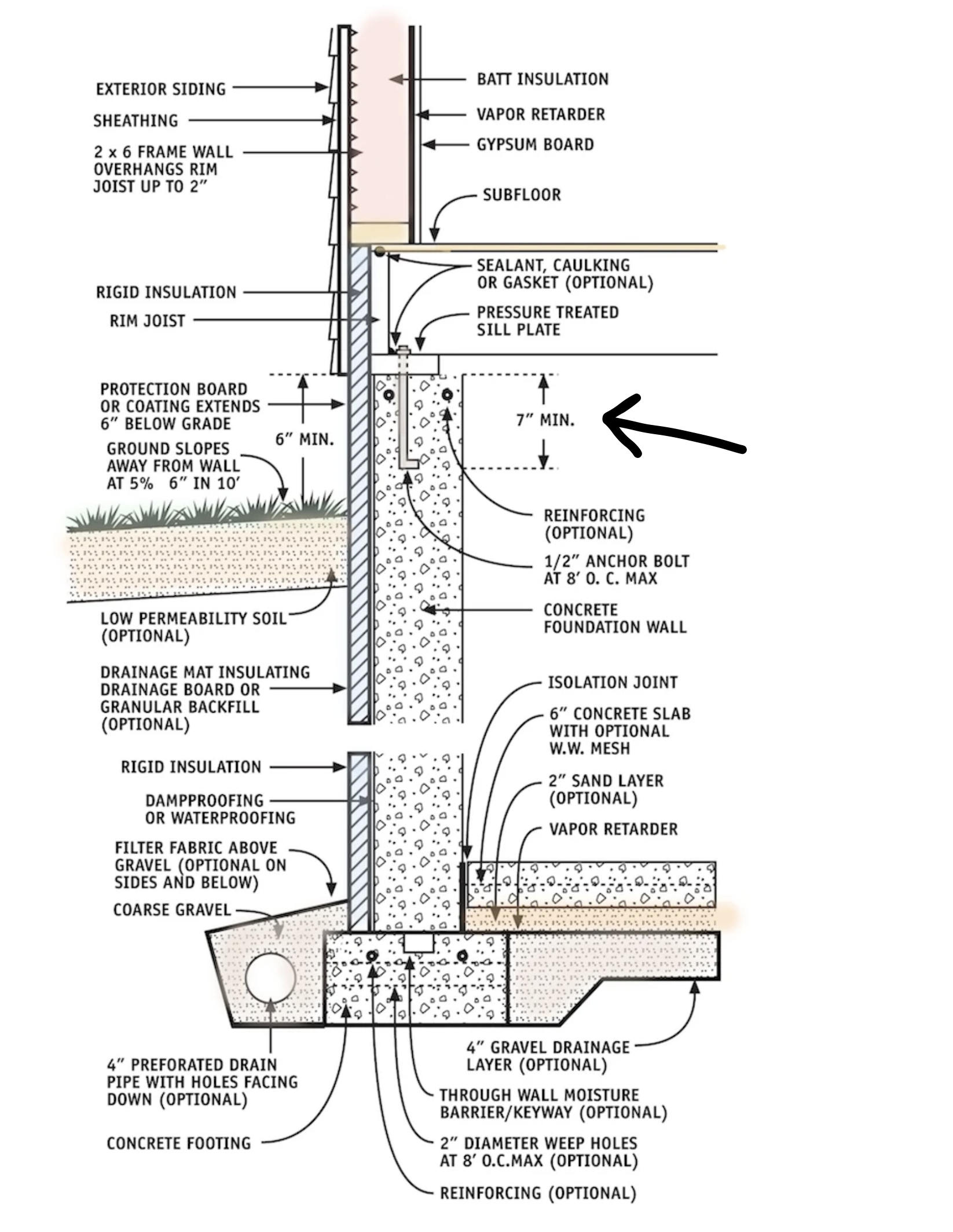
- Depth: Bolts must extend at least 7 inches (178 mm) into concrete or grouted cells of concrete masonry units
- Positioning: Bolts must be located in the middle third of the plate width
- Hardware: Each anchor bolt needs a properly tightened nut and washer
- Quantity: At least two bolts must be used for each plate section
- End Placement: At least one bolt must be located no more than 12 inches (305 mm) or less than seven bolt diameters from each end of the plate section
The Science Behind Bolt Placement
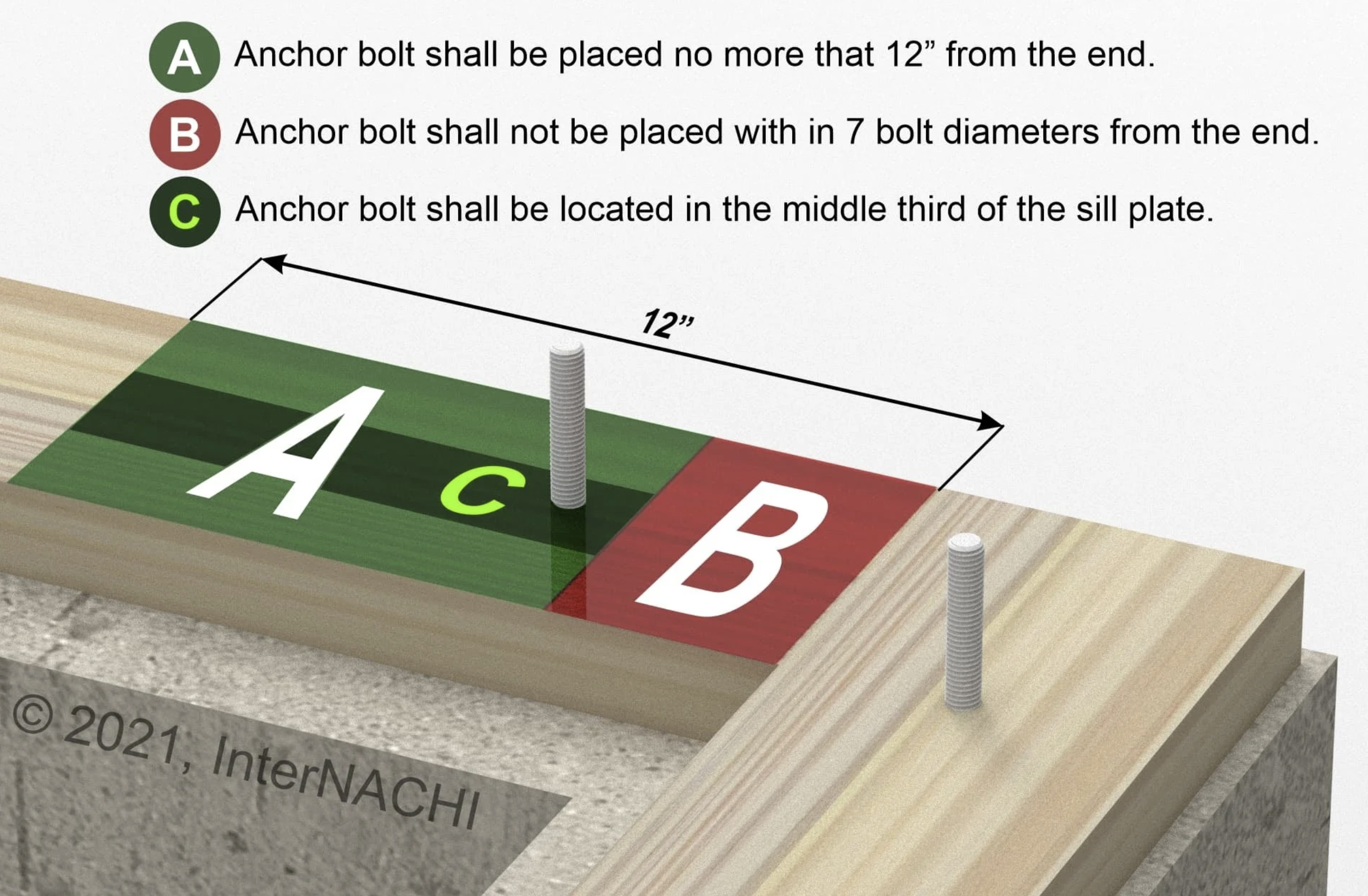
The requirement to place anchor bolts within the middle third of the plate width comes from extensive testing, not arbitrary rules. This placement:
- Allows some flexibility during installation
- Ensures adequate distance from the edge to prevent wood splitting
- Maximizes the bolt's holding power under stress
Testing has shown that anchor bolts lose significant holding power when placed closer than 1¾ inches from the plate edge. Manufacturers typically specify a minimum edge distance of 1¾ inches in their installation guidelines.
For common lumber sizes:
- In 2×4 sill plates: Middle-third placement ensures at least 1⅛ inches from the edge
- In 2×6 sill plates: Middle-third placement ensures at least 1¾ inches from the edge
This precision might seem excessive during a routine inspection, but when lateral forces come into play, those extra fractions of an inch can mean the difference between a stable structure and a compromised one.
Special Requirements for Seismic Regions
Buildings in earthquake-prone areas require enhanced anchoring systems. 2024 IRC Section R403.1.6.1 includes additional requirements that were developed following observations from earthquakes, particularly the 1994 Northridge earthquake in California, where extensive sill plate splitting led to significant structural damage.
Requirements for Seismic Design Categories
Wood light-frame structures in Seismic Design Categories D₀, D₁, and D₂, and wood light-frame townhouses in Seismic Design Category C, must meet these additional requirements:
Special Washer Requirements:
- Plate washers must be used with all anchor bolts along braced wall lines
- Standard cut washers can be used for anchor bolts in non-braced wall lines
- Approved anchor straps can substitute for bolts with plate washers
Interior Braced Wall Anchoring:
- Anchor bolts must be spaced maximum 6 feet (1829 mm) apart
- Bolts must be within 12 inches (305 mm) of the ends of each plate section
Interior Bearing Wall Anchoring:
- Anchor bolts must be spaced maximum 6 feet (1829 mm) apart
- Bolts must be within 12 inches (305 mm) of the ends of each plate section
Taller Buildings:
- For buildings over two stories, maximum anchor bolt spacing decreases to 4 feet (1219 mm). This addresses the increased lateral forces in taller structures.
Stepped Cripple Walls:
- Must follow the requirements in Section R602.11.2. This addresses special needs of non-level wall arrangements.
Wood Foundations:
- When using continuous wood foundations, force transfer capacity must equal or exceed the connections required by Section R602.11.1
- Alternatively, braced wall panels must connect to wood foundations according to Table R602.3(1)

Plate washers are particularly important in seismic regions. Unlike standard cut washers, plate washers distribute force across more of the sill plate, reducing the likelihood of the plate splitting during an earthquake—a common failure that turned many sill plates into splintered wood during past seismic events.
Plate Washers vs. Cut Washers in Seismic Zones
In seismic design categories C, D₀, D₁, and D₂, the code makes an important distinction between plate washers and standard cut washers, and this distinction directly impacts structural performance during earthquakes.
Plate Washers
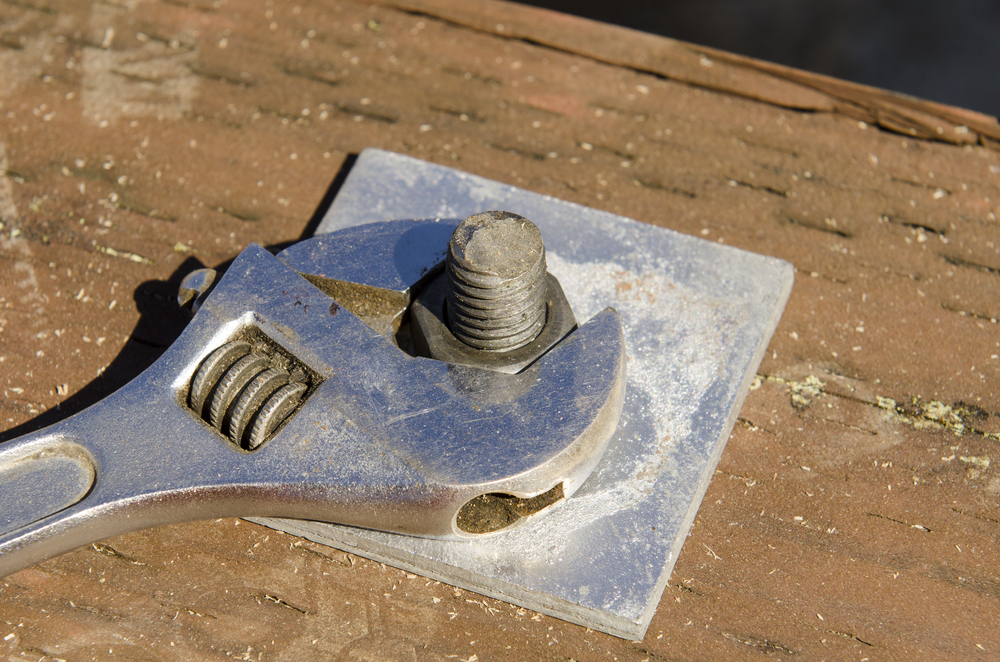
Plate washers (also called square washers) are typically square or rectangular steel plates with a hole in the center for the anchor bolt. They have several critical characteristics:
- Size and Dimensions: Section R602.11.1 specifies that plate washers must be a minimum of 2" × 2" × 3/16" (50.8 mm × 50.8 mm × 4.8 mm)
- Distribution Area: The larger surface area distributes the force of the bolt over a much wider section of the sill plate
- Failure Prevention: This wider distribution significantly reduces the likelihood of wood fibers compressing or splitting under dynamic lateral loads
- Required Locations: Must be used for all anchor bolts along the full length of braced wall lines in applicable seismic design categories
Standard Cut Washers

Standard cut washers are the common circular washers most people are familiar with. In seismic contexts:
- Limited Application: In seismic zones, standard cut washers are only permitted in wall lines that do not contain braced wall panels
- Limitations: They distribute load over a much smaller area than plate washers
- Performance Issues: During the Northridge earthquake, many sill plates with standard washers failed through splitting or "tear through" when subjected to strong lateral forces
The Science Behind This Requirement
The requirement for plate washers emerged directly from post-earthquake damage assessments, particularly after the 1994 Northridge earthquake. Engineers observed that:
- Under dynamic lateral loading, standard round washers allowed anchor bolts to effectively "tear through" sill plates
- This occurred because the smaller surface area of standard washers created high compression forces concentrated in a small area of wood fibers
- As the wood compressed or split, anchor bolts lost their holding power
- This failure compromised the entire lateral force resisting system of affected buildings
The larger surface area of plate washers prevents this failure mechanism by distributing the load across more wood fibers, reducing the pressure at any single point, creating a mechanical advantage through increased bearing surface, and providing greater resistance to bolt pull-through. Below, BP stands for bearing plate.

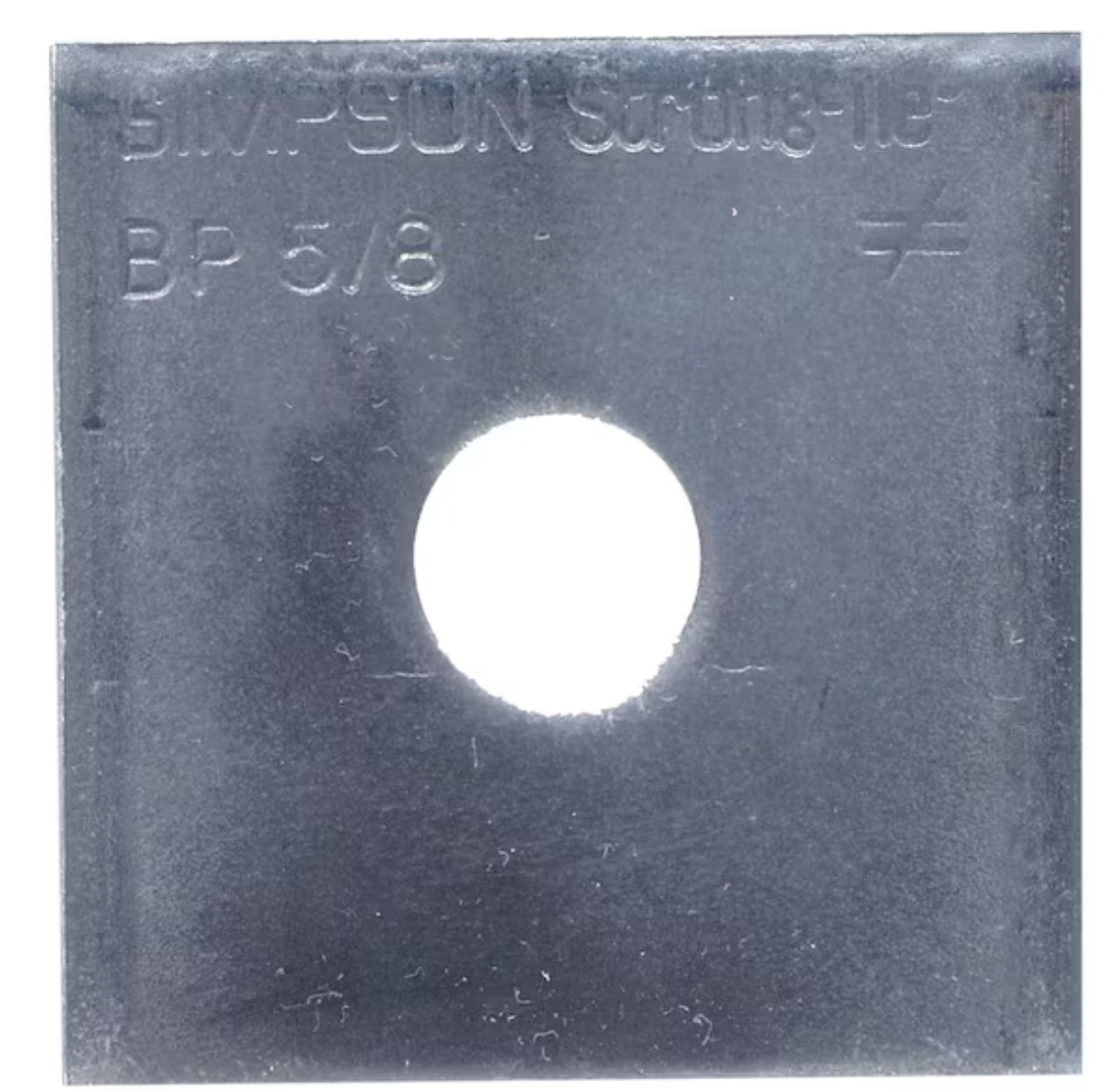
Installation Considerations
When inspecting plate washer installations in seismic regions, look for:
- Proper sizing: Confirm washers meet the minimum dimensional requirements
- Full contact: The entire plate washer should make full contact with the sill plate
- Proper tightening: Nuts should be appropriately tightened, but not over-tightened to the point of crushing wood fibers
- Correct placement: Ensure plate washers are installed at all required locations, particularly along braced wall lines
- Edge distance: Verify that the plate washer doesn't extend beyond the edge of the sill plate
"It Was Built to Code Back Then"
A small but important change in hardware requirements highlights how building codes evolve based on lessons learned from past failures. Even minor updates can significantly improve how a structure performs during a seismic event.
Sometimes, a contractor might respond to a home inspector’s findings by saying, “The house was built to code at the time.” But that doesn’t mean the house is still safe, functional, or healthy today.
For home inspectors, the best approach may be to focus less on when a house was built and more on current standards. That means evaluating the structure based on modern codes, best practices, and what we now know to be safer and more effective—regardless of the home's age.
Home inspectors aren’t code enforcement officials, but having a solid understanding of updated codes—especially changes like improvements to foundation anchorage—can go a long way toward protecting property and saving lives.
Cold-Formed Steel Requirements
Cold-formed steel framing must be anchored in one of two ways:
- Directly to the foundation, or
- Fastened to wood sill plates according to Section R505.3.1 or R603.3.1
Wood sill plates supporting cold-formed steel must follow the same anchoring requirements as standard wood construction.
Location-Specific Anchoring Requirements
These anchoring requirements apply to:
- All exterior walls regardless of seismic design category
- Braced wall panels at interior locations
Interior braced wall panels must have the same level of anchoring as exterior walls because they resist similar shear forces. For interior bearing walls that aren't part of a braced wall panel, approved fastening methods can be used instead.
When you think about earthquakes and tectonic movement, it makes perfect sense: if the Earth itself shifts, how much more important are the relatively humble anchor bolts that keep our buildings connected to their foundations?
Learning from Earthquakes
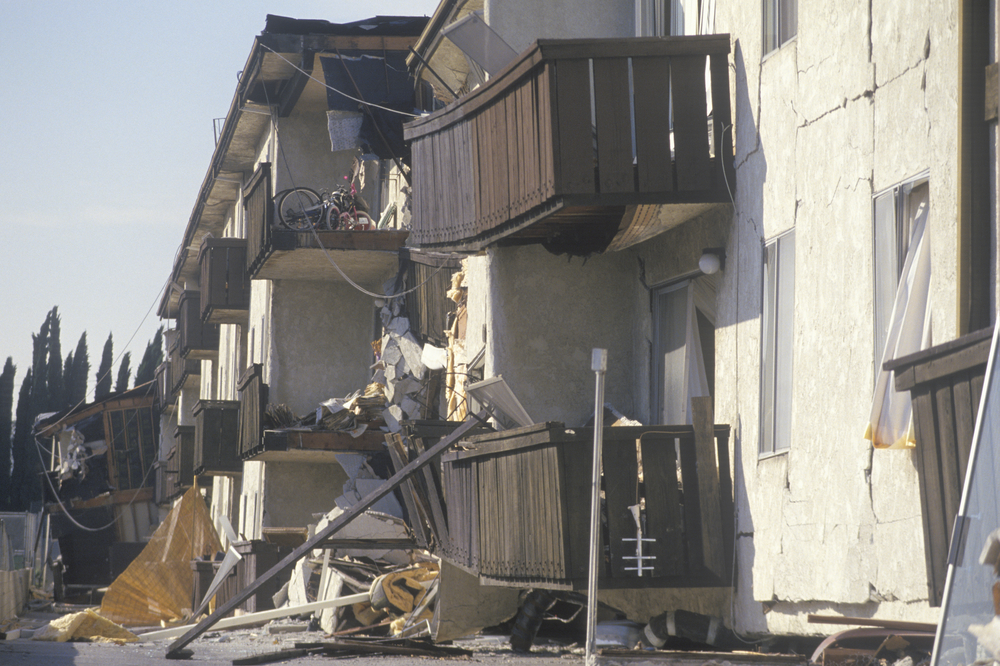
The evolution of anchor bolt requirements, especially for seismic resistance, reflects lessons learned from building failures. The 1994 Northridge earthquake was a turning point, exposing weaknesses in what were previously considered adequate anchoring systems.
Post-earthquake analysis showed that standard washers allowed too much compression of wood fibers during shaking, which let bolts effectively tear through sill plates. The resulting splitting compromised the entire lateral force resistance system—demonstrating that a building is only as earthquake-resistant as its weakest connection.
The plate washers now required in seismic regions spread the force across more surface area, significantly reducing wood compression and maintaining structural integrity during earthquakes. This improvement shows how building codes evolve by turning disaster experiences into better building practices.
Alternative Anchoring Systems
Building officials may approve alternative foundation anchoring systems if they provide equivalent strength to the specified ½-inch-diameter anchor bolts. When using alternatives:
- Manufacturer's data and evaluation reports must document the anchoring strength
- Spacing must be adjusted to provide equivalent overall anchoring capacity
- Installation must precisely follow manufacturer specifications
You can change the hardware, but you can't change the physics. Alternative systems must perform exactly the same job as traditional anchor bolts.
Special Cases and Exceptions
Monolithic Slabs
- Wood sole plates at exterior walls on monolithic slabs must be anchored
- Wood sole plates of braced wall panels at interior locations on monolithic slabs must be anchored
- Interior bearing wall sole plates on monolithic slabs (non-braced wall panels) require positive anchoring with approved fasteners
Short Walls and Braced Wall Panels
Exception 1: Walls 24 inches or shorter connecting offset braced wall panels:
- Need at least one anchor bolt in the center third of the plate
- Must connect to adjacent braced wall panels at corners (per Table R602.3(1), Item 9)
Exception 2: Walls 12 inches or shorter connecting offset braced wall panels:
- May connect to the foundation without anchor bolts
- Must connect to adjacent braced wall panels at corners (per Table R602.3(1), Item 9)
Even these short wall sections—the "mini-me's" of the framing world—need appropriate anchoring consideration, though they can get by with fewer bolts.
Protection Requirements
Sill plates and sole plates must be protected against decay and termites where required by Sections R317 and R318
Installation Methods
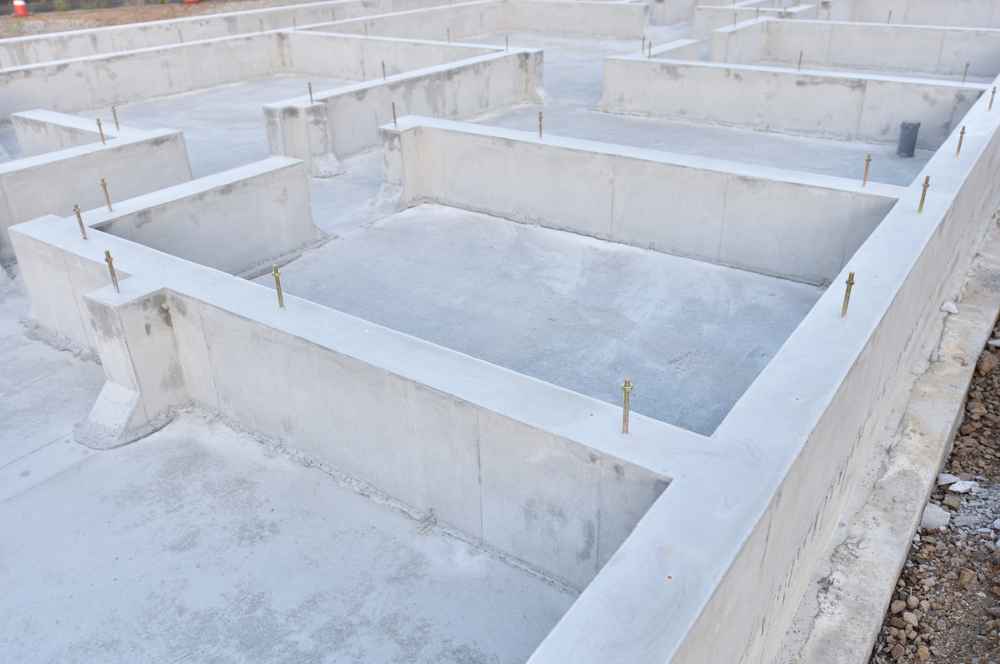
Anchor bolts can be installed in two main ways:
- Wet-set installation(often called "stabbing"):
- Anchor bolts are placed while concrete is still wet and not yet set
- This is common practice in many regions
- Provides optimal embedment in the foundation
- Post-pour installation:
- Used when anchor bolt placement during the pour is difficult
- Used when placement would interfere with concrete consolidation
- In these cases, the concrete must be vibrated to ensure full contact between anchor bolts and concrete
The term "stabbing" might sound aggressive, but it's actually the gentler approach—placing bolts in soft concrete rather than trying to force them into hardened concrete later.
Practical Inspection Guide
When inspecting a newly constructed home before walls are erected, with the foundation poured and cured and sill plates positioned for framing, check these key items:
Standard Inspection Checklist:

- Verify anchor bolt diameter (minimum ½-inch)
- Measure spacing between bolts (maximum 6 feet)
- Check distance from each end of plate to nearest bolt (maximum 12 inches, minimum seven bolt diameters)
- Confirm at least two bolts per plate section
- Verify bolts are in the middle third of the plate width
- Measure bolt depth into concrete (minimum 7 inches)
- Check that nuts and washers are properly tightened
- Verify sill plates have required decay/termite protection if needed
- Check that short walls (12-24 inches) meet exception requirements
- Verify edge distance meets manufacturer specifications (typically 1¾ inches minimum)
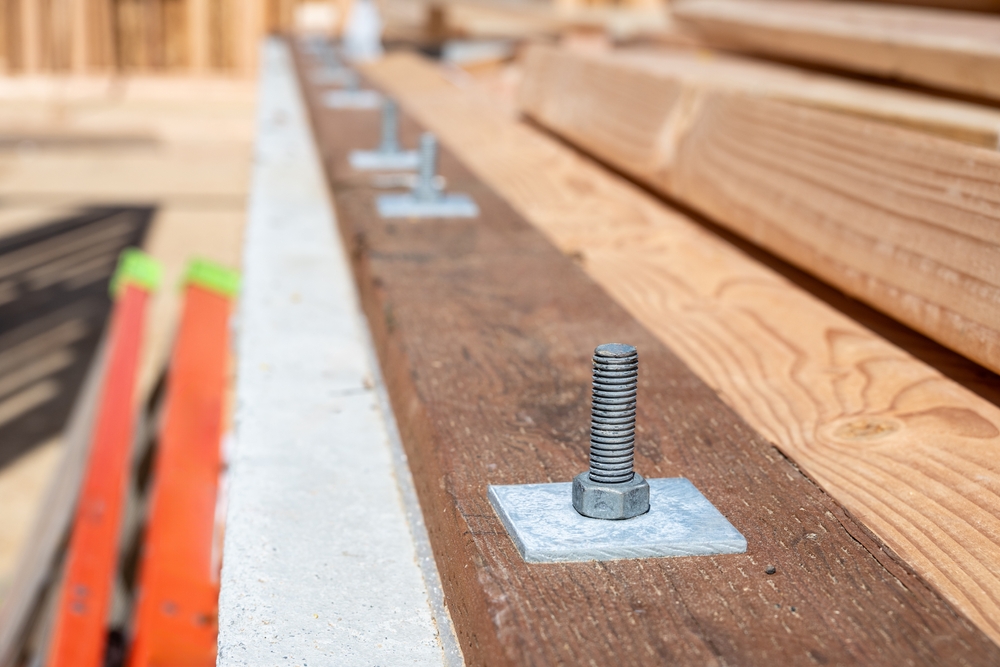
Additional Checks for Seismic Regions:
- Verify plate washers on all anchor bolts along braced wall lines
- Confirm interior braced wall plates have proper bolt spacing (maximum 6 feet)
- Verify bolts are within 12 inches of plate section ends
- In buildings over two stories, confirm reduced bolt spacing (maximum 4 feet)
- Check stepped cripple walls for conformance to Section R602.11.2
- For continuous wood foundations, verify appropriate force transfer capacity
As a certified professional inspector, approach the foundation like a detective—measuring tape ready, software checklist at hand, and with a keen eye for bolts out of place or washers improperly installed. Your detailed observation could prevent significant structural issues down the road.
Advanced Inspection Considerations
When conducting foundation anchorage inspections, pay special attention to:
- Local Code Requirements: High-wind or seismic regions may have additional requirements
- Material Compatibility: Check for proper galvanization where bolts contact treated lumber
- Alternative Anchors: When straps or other alternatives are used, verify equivalent strength
- Missing or Misplaced Anchors: Look for areas where bolts were missed or improperly placed
- Concrete Edge Distance: Check adequate concrete edge distance to prevent spalling
- Foundation Cracks: Identify any foundation cracking that might affect bolt effectiveness
- Retrofits: In existing structures, evaluate retrofitted anchors for proper installation
- Documentation: For alternative anchoring systems, check for evaluation reports
- Seismic Compliance: In applicable seismic design categories, verify all requirements of Section R403.1.6.1
- Plate Washer Installation: Ensure plate washers are properly installed with full contact to the sill plate
Comprehensive Inspection Verification Checklist
Standard Anchoring Requirements
- Anchor bolt diameter meets minimum ½-inch requirement
- Maximum spacing between bolts does not exceed 6 feet
- Minimum of two bolts per plate section
- Bolts positioned within middle third of plate width
- Edge distance from bolt to plate edge meets minimum requirements (typically 1¾ inches)
- End bolts within 12 inches of plate ends
- Bolt embedment at least 7 inches into concrete/masonry
- Nuts and washers properly installed and tightened
- Special provisions for monolithic slabs properly followed
- Exception requirements met for short walls connecting braced wall panels
- Decay and termite protection where required
- Alternative anchors or straps (if used) provide equivalent anchoring
- Cold-formed steel anchored per appropriate requirements
- Concrete properly consolidated around anchors (especially for wet-set installations)
Seismic Region Additional Requirements
- Plate washers installed on all anchor bolts along braced wall lines
- Cut washers correctly used for non-braced wall sections
- Interior braced wall plates have maximum 6-foot bolt spacing
- Interior bearing wall sole plates have maximum 6-foot bolt spacing
- Bolts within 12 inches of plate section ends
- In buildings over two stories, bolt spacing reduced to maximum 4 feet
- Stepped cripple walls conform to Section R602.11.2
- Continuous wood foundations provide appropriate force transfer capacity
- Regional requirements for specific seismic design categories addressed
Understanding and properly inspecting foundation anchorage is essential for ensuring building structural integrity, especially in regions prone to extreme weather or seismic activity. Thorough inspection of these elements is critical for identifying potential weaknesses before they lead to structural failures.
The connection between foundation and building frame may be hidden once construction is complete, but it remains one of the most important aspects of residential construction. A methodical inspection approach, informed by both code requirements and performance principles, is the best way to ensure long-term structural stability.
Remember, as a professional home inspector: spotting missing or improper anchor bolts might not be as exciting as finding hidden water damage, but the structural safety you help ensure through diligent inspection will be invaluable to your clients—especially when nature tests their home's resilience.
Further Reading
To deepen your understanding of foundation systems and building code requirements, consider exploring these related articles:
- From Foundation to Roof: Understanding All Types of Code Inspections - A comprehensive overview of different code inspections throughout a building's structure.
- Foundation Fortitude: Cracking the Code for a Solid Home (and Why You Should Care) - Explores how building codes ensure structural integrity of foundation systems.
- Foundation Fundamentals: Load Paths and Water Paths (IRC R401.2 & R401.3) - Examines how foundations manage structural loads and water management requirements.
- Footings: The Unsung Heroes Beneath a House - Details the critical role of properly designed and installed footings.
- Steel Bones: The Critical Role of Rebar in Foundation Strength - Explains how rebar in concrete footings functions as a skeletal framework of steel, providing tensile strength and structural integrity to the foundation.
These resources provide complementary information that, together with this article, will give home inspectors, code inspectors, and contractors a well-rounded understanding of how a home is built safe, functional, and healthy.
More Information
- Free, Online ICC-Approved CEU Courses
- 2023 Florida Residential Building Code Course
- Property Maintenance and Housing Code Inspector Course
- Advanced Residential Code Inspection Practice Questions
- 2021 International Residential Code® (IRC®) Exam Study Course
To learn more about homes, inspections, and building standards, visit www.nachi.org/education.
To become a certified home inspector, visit www.nachi.org/certifications.
Join the International Association of Professional Contractors.
